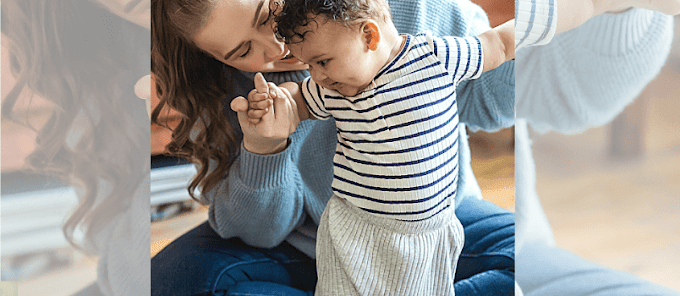How beautiful but challenging being a parent is!, but If your baby is not walking at 20 months, it is the time you might be worried and often reading a lot about baby walking problems with this question in your mind when do babies start walking on their own normally?
Babies normally start to walk, when they are around one year or one year and a half old if not along with other methods you can teach and help babies walk independently with the baby walking toys, or you can also help baby walk alone or first teach her walk with a walker.
Signs, the baby will walk soon
When your baby crawling on all fours, along with many other cute motions, here are the signs, the baby will walk soon;
- She starts wandering around.
- She needs to move to satisfy her curiosity and desire to learn about her surroundings.
- She sees an object up high she tries to stand up, reaching for it with her hand.
- The baby becomes more and more active with the gradual development of muscles and she gets the strength to move on her own.
How can you help teach your baby to learn to walk independently?
You can help the baby walk sooner by following these tips;
- Design pre-walking exercises to strengthen her postural muscles.
- Stimulate her capabilities to help a baby walk alone.
- Play with him to help your baby walk on her own.
- Baby walking toys.
Design pre-walking workouts to strengthen her postural muscles
By designing and arranging some pre-walking exercises, you can help the baby walk sooner and faster without a walker. Though your baby will walk according to the time decided by her own as described by the American Academy of Pediatrics (AAP).
"Bicycle " workout
Tone her leg muscles by grabbing her ankles while she is lying on her back and help him imitate as she is on a bicycle ride. Her rhythmic motion will help him strengthen her leg muscles and consequently help the baby walk early with or without a walker.
"Airplane" workout
Play the "airplane" game by holding her face down on her belly, this exercise will prove really useful to strengthen her body, because of the workout of her postural muscle, hold him above the table or bed, while setting him down after holding him in your arms, so she can stretch her legs in this way you can help him stand on her own.
Play with him to help your baby walk on her own
To help your baby walk on her own is playing with the ball. By chasing a rolling ball on the floor with a deep desire to hold it, will help your baby learn fast how to stand on her feet, strengthen her muscles, improve muscle coordination and help the baby walk flat-footed. Encourage your baby to stand on her own by intriguing objects like toys or boxes and with these playing activities, she will gain confidence to stand on her own, which will help the baby walk flat-footed.
Stimulate her capabilities to help a baby walk alone
Never force your baby to walk, babies normally stand up on their own feet when they think that the right moment has come. Stimulate her capabilities by attracting him towards her favorite toy from a certain height; so that she may stand up and exert efforts to touch, catch, or grab her teddy.
By holding the baby from her armpits and allowing him to touch the ground proves helpful in teaching him how to stand on her feet.
Baby walking toys & Baby walking shoes
Always keep in mind that physical activities with a baby need some precautionary measures to be taken first, make sure that;
- Doors are opening towards the outside.
- No sharp or pointed objects around.
- No long curtains.
- No wheeled furniture around.
- Drawers must be locked.
- The floor must be clean and dry.
- The baby must be without shoes and inconveniently fitted clothes.
Here are the reasons for late walking in babies?
What foods help baby walk sooner
- Cereals (rice, oats, lentils)
- Fruits (apple, banana, mango, avocado)
- Vegetables(carrots, spinach,pumpkin)
- Dairy (yogurt)









0 Comments